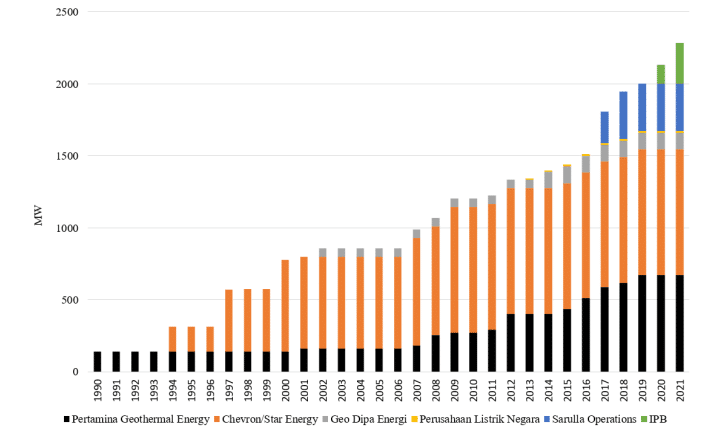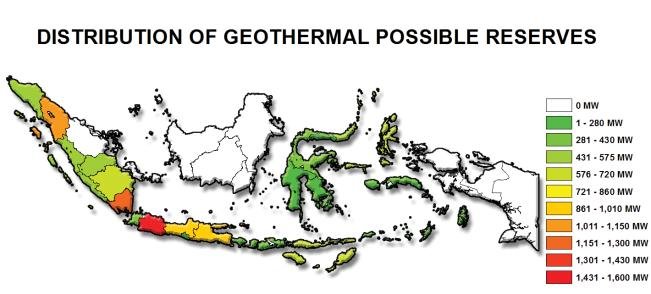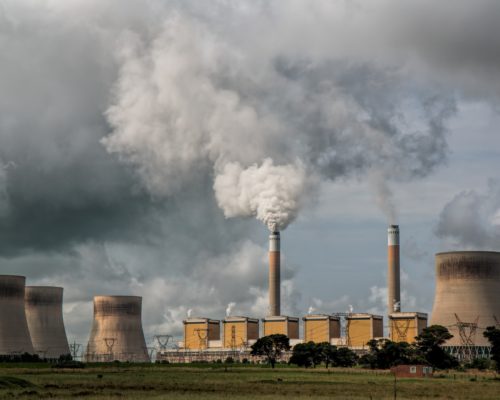Indonesia’s Untapped Geothermal Energy Potential
Source: Bloombergy Media Studios
28 February 2024 – by Eric Koons
Indonesia’s strategic location along the Pacific Ring of Fire not only makes it prone to volcanic activity but also positions it as a hotspot for geothermal energy in Indonesia. The country has 117 volcanoes and the highest number of active volcanoes in the world since the 1950s.
Indonesia has the world’s largest geothermal potential, with an estimated geothermal capacity of around 27.79 gigawatts (GW). It accounts for 40% of the world’s geothermal resources. Despite this, geothermal energy contributes a relatively small fraction of the country’s total electricity generation.
Indonesia has set ambitious goals to harness this renewable energy source along with solar power and wind power, aiming to become a world leader in geothermal power. The country’s net-zero strategy places a major emphasis on developing its geothermal resources to decarbonise the power sector.
Is Geothermal Energy Used in Indonesia?
Currently, Indonesia’s geothermal utilisation stands at an interesting point. Utilisation in terms of the country’s total power generation is low at just 3% of its installed power capacity and 5% of total power generation. However, Indonesia generates the second-most geothermal power of any country – only behind the United States. This speaks to the underdeveloped global geothermal power industry and the uneven distribution of geothermal resources.
The country has an installed capacity of approximately 2.3 GW, up from around 1.25 GW in 2009 and less than 0.25 GW in 1990.

This growth is steady but not nearly fast enough to reach the country’s goals of 7.24 GW by 2025 and 9.3 GW by 2030. Challenges slowing development include high upfront exploration costs, technological barriers and environmental concerns associated with geothermal drilling. Indonesia will need to address these concerns to expedite geothermal sector growth.
How Many Geothermal Power Plants are in Indonesia?
Indonesia has 16 operating geothermal power plants ranging in capacity from 2.5 MW to 377 MW. These geothermal plants are spread across the country, yet the highest concentration is in Java and Sumatra – the regions with the highest geothermal potential.

The largest facility is the Salak Geothermal Power Plant in West Java. The power plant was finished in 1994, yet it has had several additional phases of development since. Its total capacity of 377 MW means it has the fourth-highest plant capacity in the world. The facility is privately owned and ties directly into the grid, selling power to the local utility provider, PLN.
What Was the First Geothermal Power Plant in Indonesia?
Indonesia’s first geothermal power plant was the Kamojang Geothermal Plant in West Java. Initial exploration for the facility began in 1974, and the geothermal power station started operating in 1983.
Its initial capacity was 30 MW, and through four major additions over the last three decades, it now has a capacity of 235 MW. This supplies energy to 260,000 houses in the region and offsets 1.2 million tonnes of CO2 annually.
The Future of Geothermal Energy in Indonesia
The future of geothermal energy in Indonesia is both promising and fraught with challenges. Current projections show the country reaching a capacity of 7 GW in 2030, which is five years behind its goal.
“In the last three years, the addition of geothermal power plant capacity has been at most 200-300 MW per year, when we should be growing at a rate of 500-600 MW per year to meet that target (7 GW by 2025).”
Fabby Tumiwa, the Executive Director of the Institute for Essential Service Reform (IESR)
This is primarily due to the fact that geothermal development is a risky business, and the geographical locations of potential geothermal sites often coincide with protected forests, raising environmental and social concerns. Existing government incentives to drive growth in the industry are largely seen as inadequate.
Overcoming Challenges for Geothermal Growth
To navigate these obstacles, Indonesia is adopting a multi-faceted approach. The World Bank’s initiative to reduce exploration risks by providing risk mitigation funding, as well as the Indonesian government’s efforts to streamline regulatory processes, are steps towards making geothermal projects more attractive to investors. Furthermore, partnerships with international entities are essential to Indonesia’s strategy to accelerate geothermal development.
This increase in investment is already coming into play. For example, Indonesia’s recent adoption of the Just Energy Transition Partnership (JETP) calls for USD 20 billion from a combination of domestic and foreign entities to develop its renewable energy sector. A significant portion of this will likely go towards geothermal energy. Additionally, the US International Development Finance Corporation recently announced a USD 126 million loan to a geothermal developer planning to build a new 31.4 MW facility in East Java.
If the Indonesian government can continue to incentivise development by reducing exploration risk and securing international funding, there is the potential for a geothermal boom. This will require an ongoing assessment of existing government policy and strategic global partnerships.
by Eric Koons
Eric is a passionate environmental advocate that believes renewable energy is a key piece in meeting the world’s growing energy demands. He received an environmental science degree from the University of California and has worked to promote environmentally and socially sustainable practices since. Eric’s expertise extends across the environmental field, yet he maintains a strong focus on renewable energy. His work has been featured by leading environmental organizations, such as World Resources Institute and Hitachi ABB Power Grids.
Read more




